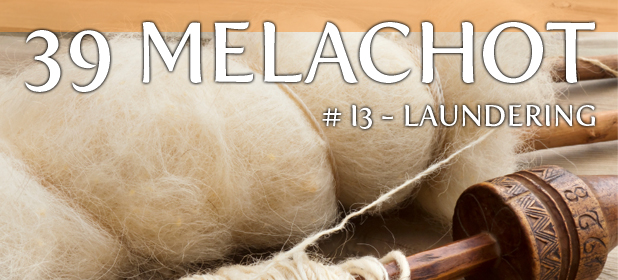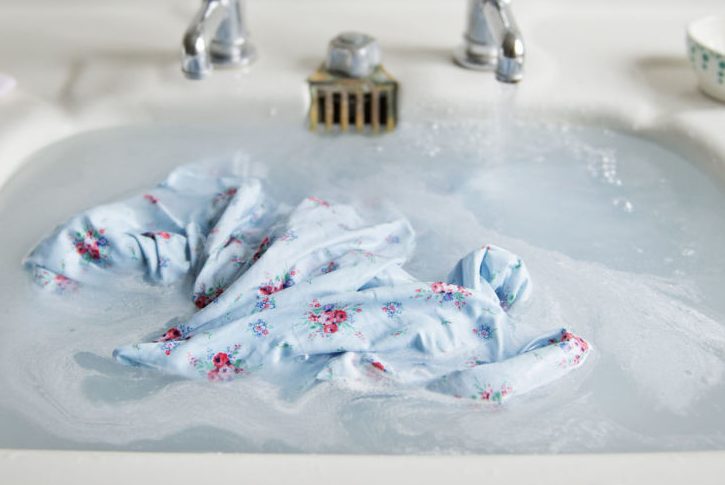So, here we have wool that has been shorn off the sheep and we are ready to turn it into cloth. Wool is pretty filthy at this point, so the first step in the process is to clean it. The wool has to be scrubbed in water, and then bleached to purify it of debris. This step is the melacha of melabein. (There is a difference of opinion as to whether the scrubbing or the bleaching is the primary melacha but in the final analysis, both activities are prohibited on Shabbos. The word “melabein” more literally means whitening or bleaching, but “laundering” has a broader application that better captures the scope of this melacha.)
 Any form of laundering that cleans or brightens a fabric is melabein. It has to be an absorbent material such as cotton or wool for melabein to apply; there is no melabein on rubber boots or a plastic poncho. Accordingly, if one gets cholent on his Shabbos shirt, he may not wet the spot to clean it. (Melabein is not limited to clothes; one may equally not wet a tablecloth, upholstery, etc.)
Any form of laundering that cleans or brightens a fabric is melabein. It has to be an absorbent material such as cotton or wool for melabein to apply; there is no melabein on rubber boots or a plastic poncho. Accordingly, if one gets cholent on his Shabbos shirt, he may not wet the spot to clean it. (Melabein is not limited to clothes; one may equally not wet a tablecloth, upholstery, etc.)
Three activities are forms of melabein: soaking, scrubbing and wringing out. So, not only may one not wet a garment or other fabric, one may not rub a spot (even without water) or squeeze something that has become wet. For this reason, one may wash dishes on Shabbos using a brush but not a sponge.
Brushing dust off of a garment is problematic because of melabein. This is because dust particles are minute and are virtually absorbed into a fabric. Removing something larger from a garment – pet fur, for example – is permitted, though one may not use a brush to do so.
There are parameters to what is and isn’t considered melabein. For example, one may walk to shul in the rain, even though one’s clothes will get wet. That’s because this is more tantamount to soiling his garments than improving them. (Similarly, one may dry one’s hands on a towel, even though this makes the towel wet.)
This is just an introduction to the concepts of the melacha of melabein; it is not a substitute for a full study of the halachos.

